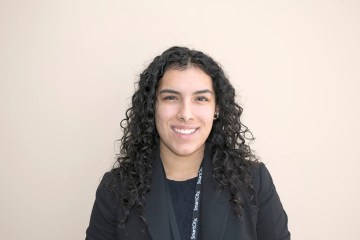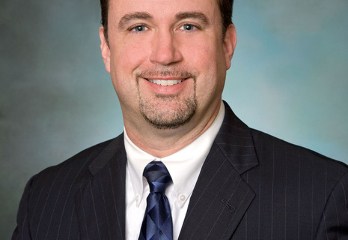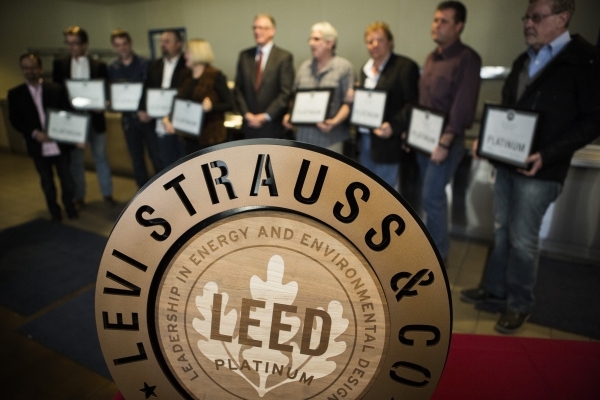
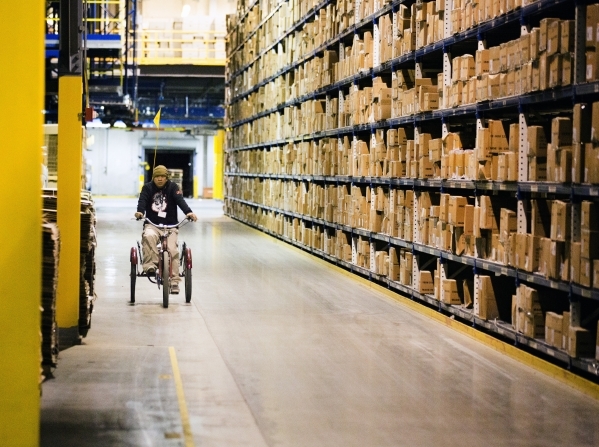
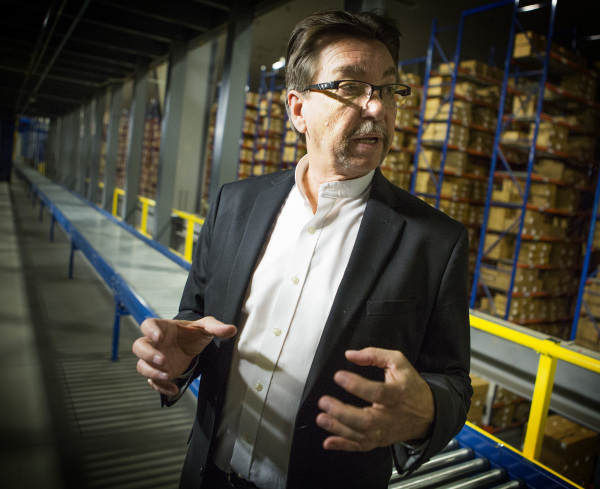
Michael Kobori, vice president of sustainability at Levi Strauss & Co., summed up his firm’s position as “We want to be the most sustainable apparel company in the world.”
Kobori was speaking Jan. 11 at a ceremony presenting Exhibit A — a Henderson distribution facility that has attained a LEED Platinum Certification for Existing Buildings from the U.S. Green Building Council (USGBC).
The 620,000-square-foot Levi Sky Harbor Distribution Center, next to Henderson Executive Airport, is the largest facility of its kind in the world to achieve this highest building certification from the USGBC.
Speaking before many of the center’s employees, Kobori was quick to point out that this achievement would not have been possible if it were not for the efforts of the local sustainability team and every individual working in the Henderson facility.
The sustainability team took the initiative by identifying the opportunities, developing the plans and finding ways to fund the resources needed to conserve energy, save water and reduce overall waste. The employees make a conscious effort to recycle everything they possibly can and even bring used batteries from home for the battery-recycling program. The result is a 90 percent reduction in waste that is sent to the local landfill.
During a tour of the facility, Cheryl Smith, a 10-year employee of the company, was proud to show off her idea for energy savings. She designed a wall plate for the light switches with a graphic to remind employees to turn off the lights when they leave a room.
Not only is Levi working to save the environment, the company is also encouraging its employees to be health-conscious. The company has replaced the old vending machines with new ones containing healthy snacks and has developed healthy food menus for the cafeteria. In addition, before workers begin their shift, they gather in the warehouse for an organized stretching program in an effort to reduce muscle and joint injuries.
Levi has called Henderson its home since 1972. It moved from a facility on Conestoga Way to its new facility at St. Rose Parkway and Executive Airport Drive in 1994, six years before the introduction of the USGBC’s Leadership in Energy and Environmental Design (LEED) certification program was introduced.
The process of retrofitting the building to become more sustainable was started in 2010. Levi began by removing the turf and planting drought-tolerant plants around the building. Inside the building, it installed low flow water fixtures and 24-foot diameter ceiling fans to circulate the air and reduce the air-conditioning demand. It has reduced the amount of heat absorbed by the building by installing a white reflective roof that also reduces the outside “heat island effect” by dropping the roof temperature by 45 degrees during the hottest days of the summer.
All of the mechanical equipment used in the warehouse is designed to save energy. The motors used for the conveyor system have sensors that can tell how much weight is being moved and automatically adjust power up or down based on the load. The forklifts are electric, which in addition to reducing air pollution also conserve electricity through a charging system that shuts down when the unit reaches a full charge.
“We have done something that nobody else in the world has done,” said Kobori.
However, that does not mean the company has reached its goal. There are over 4,000 lights throughout the warehouse facility, and calculations are being made as to the cost to convert each fixture to LED bulbs and the estimated energy savings.
“We are going to take what we have learned here in Henderson and use it in our facilities around the world,” said Kobori.
Levi, which also manufactures Dockers and Denizen brands, has three company-owned warehouse distribution facilities in the U.S. and a number of company distribution and manufacturing facilities around the world.


